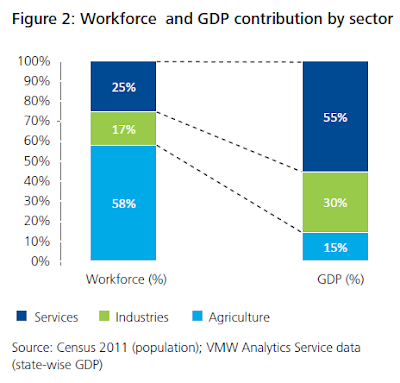FT has this quote from German economist Hans Werner Sinn about how Germany managed to emerge from the problems related to re-unification and labour market rigidity in the nineties.
Update 1 (12/5/2012)
And it appears that these trends will continue. German factories say orders continue to rise from buyers outside the euro zone, and continue to decline from companies within the zone.
Update 2 (26/6/2012)
Gunnar Beck strikes a contrarian note to the widely cited claim that Germany benefited enromously from the single currency and therefore ought to now be willing to take the losses, if any, to keep the eurozone in tact. He argues, pointing to a series of figures and Germany's less than impressive economic performance since 1995 (when EMU was launched), that Germany did not benefit much from the Eurozone. He writes,
The demographic problem, the high costs in the new Länder [eastern Germany], are still there. But the problems of west Germany being too expensive, with wages too high, has been resolved . . . What helped was that other countries inflated away from Germany. That has contributed greatly to Germany’s success.Werner Sinn also talks about how Germany benefited from the Eurozone crisis with German savings remaining in the country and boosting investment.
Capital markets have now understood that you can burn a lot of money in southern Europe. Germans’ savings, which previously drained to the south, often via the French banking system, now prefer to stay in the safe home haven, even if the rate of return is less. This has been the driving force behind Germany’s boom of the past two years.This German success has created problems elsewhere, especially among the peripheral economies. The single biggest challenge for these economies is to restore their external competitiveness. However, given the single currency, regaining competitiveness would require extended duration of inflation in Germany and deflation in periphery. This has to be coupled with fiscal loosening by both consumers and governments in Germany so as to provide demand for producers in the peripheral economies. Both look extremely difficult propositions.
Update 1 (12/5/2012)
The German government reported that the country’s trade
surplus with the other 16 countries in the euro zone was 62.2 billion
euros in the 12 months through March, down 29% from the
level a year ago, and the lowest for any 12-month period since 2002.However, its trade surplus with countries not in the European Union
has risen, offsetting the decline within the euro zone. That figure
climbed to 62.9 billion euros, a record figure that is up 115%
over the previous year. Germany’s overall trade surplus was at 162.7 billion euros, 3 percent higher than it was a year ago.
And it appears that these trends will continue. German factories say orders continue to rise from buyers outside the euro zone, and continue to decline from companies within the zone.
Update 2 (26/6/2012)
Gunnar Beck strikes a contrarian note to the widely cited claim that Germany benefited enromously from the single currency and therefore ought to now be willing to take the losses, if any, to keep the eurozone in tact. He argues, pointing to a series of figures and Germany's less than impressive economic performance since 1995 (when EMU was launched), that Germany did not benefit much from the Eurozone. He writes,
Between 1998 and 2011, German exports grew by 117 percent, according to the Federal Statistical Office. But if the euro was so vital to Germany’s external trade, then the increase in exports to euro zone members would have been greater than the increase to other countries. In fact, the reverse is the case... German exports rose most — by 154 percent — to the rest of the world; by 116 percent to non-euro E.U. members; and least of all, 89 percent, to other euro zone members. In 1998 the euro zone still accounted for 45 percent of all German exports; in 2011 that share had declined to 39 percent...
Between 1995 and 2008, Germany saved more than most, yet it exhibited the lowest net investment rate of all O.E.C.D. countries. On average, from 1995 to 2008, 76 percent of aggregate German savings (private, governmental and corporate) were invested abroad.





































